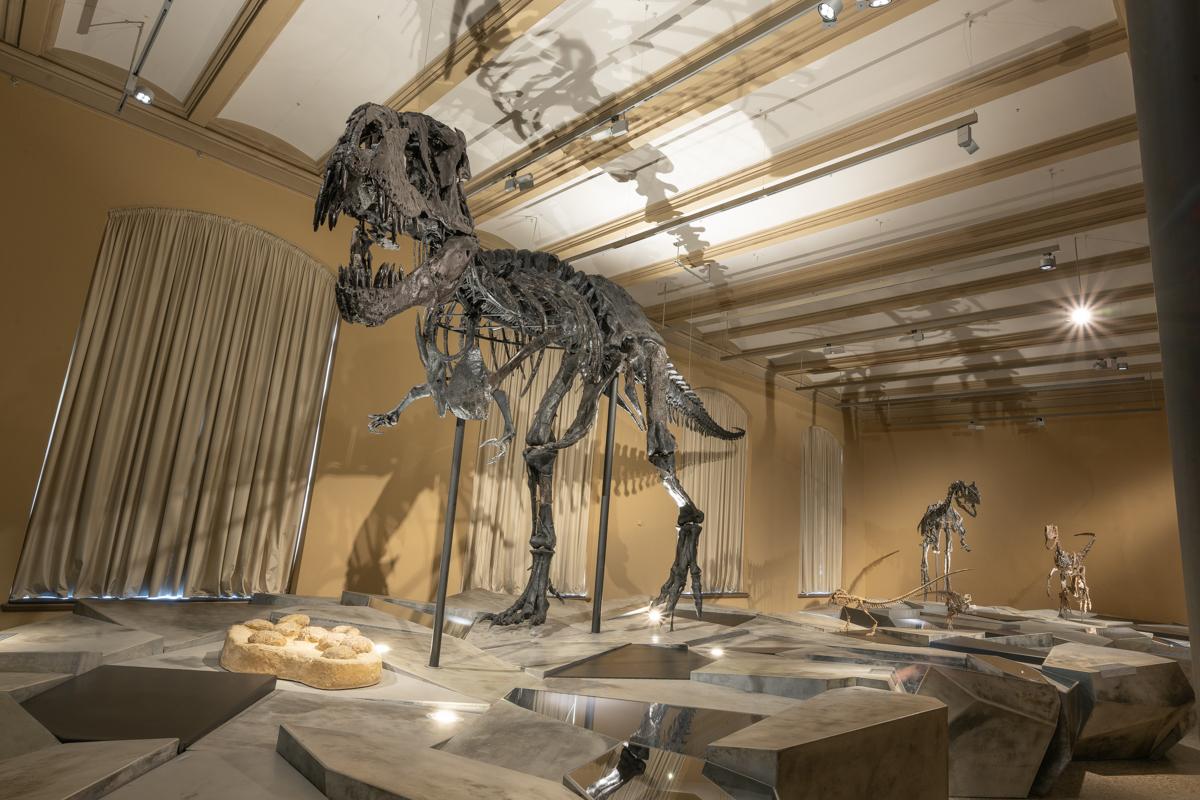Tyrannosaurus rex Tristan Otto is back in Berlin! And he's not alone! In the exhibition "Dinosaurs! Age of the Giant Lizards", which can be visited at the Museum für Naturkunde Berlin from 23 August 2022 until the end of 2023. Some of the spectacular new dinosaur fossils can be discovered in their original forms. Among them are an Allosaurus, Plateosaurus, a nest with eggs as well as Casper – an approx. seven-year-old T. rex juvenile. Unique in Europe, our permanent exhibition and this individual special exhibition show objects from all the geological eras in which dinosaurs lived: Triassic, Jurassic and Cretaceous.
Dinosaurs dominated our planet for more than 150 million years and are therefore one of the most successful groups of animals that the earth has produced. The first documented dinosaur discovery in Germany is also known as the "Swabian Lindworm". Plateosaurus was found near Nuremberg in 1834. It is one of the most primitive dinosaurs and lived around 220 million years ago.
Jurassic was the peak of the dinosaurs. Nanosaurus, Diplodocus, Giraffatitan & Co formed the food basis for a multitude of predators and scavengers. Above all the predatory dinosaur specimen Allosaurus, which was at the top of the food chain around 150 million years ago – long before T. rex. The small, sharp teeth can be clearly seen on the very well-preserved skull. One of the two Allosaurus specimens on exhibition belongs to a new species that was first scientifically described in 2020 and called Allosaurus jimmadseni.
Tyrannosaurus rex lived at the end of the Cretaceous approximately 66 million years ago. Tristan Otto is one of the few original skeletons of a T. rex in Europe. The twelve-metre-long and four-metre-high skeleton is one of the best well-preserved T. rex specimens in the world. Tristan Otto fascinated over a million visitors to Berlin. He was ambassador for Visit Berlin and travelled to Copenhagen in 2020. Now he can be visited again in the special exhibition.
Also on exhibition is the skull of Casper, an exceptionally rare T. rex juvenile. In addition to it, is a nest with eggs of a dinosaur of the exact epoch.
The age of the dinosaurs ended with a big explosion 66 million years ago, but they were not extinct. Today it is a known fact that birds are direct descendants of theropods, a group of dinosaurs to which Tyrannosaurus rex belonged. Evidence of feathered dinosaurs already exists from the upper Jurassic 150 million years ago – Archaeopteryx, which can also be seen in the exhibition of the Berlin Museum of Natural History. It is one of the best-known representatives. Anyone who comes out of the exhibition will now look at the Berlin sparrows with completely different eyes.
